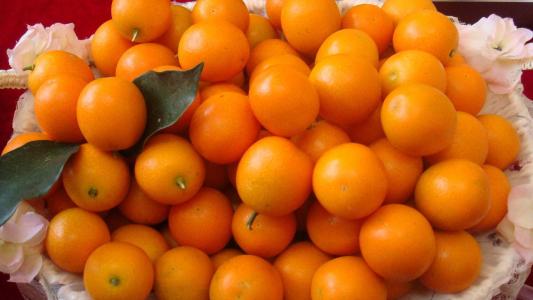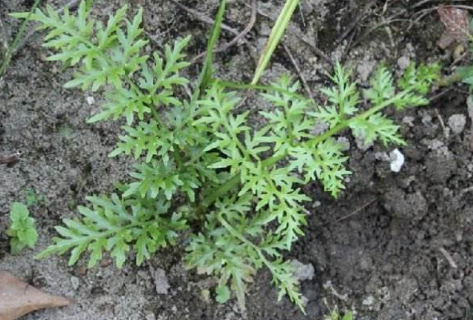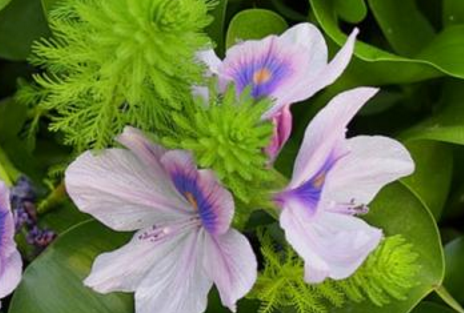Culture methods of kumquat
1. Lighting
Kumquat likes sunshine and warm and humid environment, so it is best to put kumquat in a sunny place, but pay attention to moderate light in summer, so that kumquat will grow well.
2. Watering
Kumquat is not resistant to water and moisture, so there can be no stagnant water in watering, otherwise kumquat will rot its roots, it is best to keep the basin soil moist.
3. Pruning
For kumquat pruning is a very important thing, must be pruned according to the requirements, so that kumquat will keep the plant shape beautiful.
4. Fertilization
Kumquat likes fertilizer, so it is necessary to apply fertilizer frequently when breeding, about once in 10 days.
5. Disease and insect nuisance
Kumquat is the most common pest, so once pests are found, they should be sprayed with insecticides, which is faster.

These are the right ways to raise kumquat. Have you learned it? Next, the editor will introduce how to eat kumquat.
Kumquat culture method kumquat alias: kumquat, milk tangerine, jujube, golden bullet, kumquat, kumquat, horse water tangerine, kumquat, kumquat, Rutaceae kumquat is a famous ornamental fruit plant. Especially in Guangdong and Hong Kong, many people buy for good luck during the Spring Festival. Kumquat is an evergreen shrub. Flowers solitary, white, fragrant. Most of the fruits are oval, golden and shiny, and some varieties are edible. Most of them are propagated by grafting. Aquaculture kumquat generally needs four points for attention: 1, suitable light kumquat sex like sunny warm and humid climate, maintenance should be placed in a sunny place. If the light is not enough and the environment is shaded, it will often cause branches and leaves to grow, blossom and bear fruit less. Because kumquat likes cool climate in summer, or summer sunshine intensity is large, it is better to put it slightly in the shade at this time. It is advisable to keep room temperature without icing in winter. If the room temperature is too high and the plant is not fully dormant, it will grow weak in the following year and it is easy to drop flowers and buds. 2. Skillful pruning is an important technical measure to make kumquat blossom fruitful. In order to make the tree beautiful and fruitful, each year, before the sap begins to flow, a re-pruning is carried out before the spring buds germinate, cutting off withered branches, disease and insect branches, over-dense branches and overgrown branches, leaving only 2-3 buds at the base of each branch and cutting off the rest. In this way, more than 10 full spring branches can be germinated. When the new plant grows slightly to 15-20 cm, the heart is removed to make the plant shape plump, and a quick-acting phosphate fertilizer is applied at this time to promote flower bud differentiation. When blooming, flowers should be thinned properly to save nutrients. After the young fruit is born, when the young fruit grows to about 1 cm, the fruit can be thinned, the sturdy branches leave 2-3 fruits per plant, the weak branches retain one fruit per branch, and the whole plant fruit evenly. Cut off the autumn a little in time, do not make the secondary fruit, in order to achieve the same shape and maturity, and improve the ornamental value. 3. When applying sufficient fertilizer to kumquat, 4 parts of rotten leaf soil, 5 parts of sandy soil and 1 part of cake fertilizer should be selected. When changing the basin, apply hoof slices or rotten cake fertilizer to the bottom of the basin as base fertilizer. From the beginning of new bud germination to before flowering, mature shallow paste residue water can be applied every 7-10 days, and alum fertilizer water can be poured alternately several times. After the beginning of summer, it is appropriate to apply more phosphate fertilizer to facilitate bud pregnancy and fruiting. Results fertilization should be suspended at the initial stage, and liquid fertilizer could be applied once a week until the end of September when the young fruit grew to about 1 cm. 4. Watered gold orange likes to be wet but avoid stagnant water, and the pot soil is easy to rot if the soil is too wet. Therefore, it is better to keep the basin soil moist during the growth period. It is dry and windy in spring. Spray water on the leaves once a day to increase air humidity. Spray water 2 or 3 times a day in summer, and spray water to the ground. But avoid spraying water during flowering to prevent rotten flowers and affect the fruit. The stagnant water in the basin should be dumped in time in the rainy season to avoid rotting roots. When you put it outdoors in summer, it is best to use bricks to cushion the flowerpot to facilitate drainage. Kumquat is sensitive to water from white flower stage to young fruit stage. At this time, the basin soil is too dry, the pedicel and fruit stalk are easy to detach and fall off; excessive watering, basin soil permeability is poor, but also easy to cause flower and fruit drop. Therefore, at this time, it is appropriate to keep the basin soil in a semi-moisture state that is not dry or wet. Culture methods of kumquat
Kumquat, also known as kumquat, golden bullet, golden jujube and so on. Evergreen shrubs or small trees of the family Rutaceae. It is native to tropical Asia and Fujian, Taiwan, Guangdong, Guangxi and other places in China.
The ornamental cultivation species of the same genus are:
Golden bullet: the leaves are thick and hard, the fruit is large and round, the sweet seeds are few and the quality is excellent.
Golden beans: the fruit is as small as beans. The plant is short and the leaves are small and inedible.
Kumquat: the fruit is small and round, fresh and pure yellow.
Longevity kumquat: also known as four seasons kumquat, moon tangerine. Fruit Obovate, top concave and base acuminate, yellowish, fragrant.
Long-leaf kumquat: long lanceolate leaves, round fruit, thin skin, not hardy.
1. Morphological characteristics are much branched, usually spiny, branches small. The leaf is oblong, the surface is dark green and bright, and the back of the leaf is scattered with oil glands. Flowers solitary or 2 or 3 flowers set in leaf axils, white and fragrant. Fruit small, rectangular round or Obovate, golden yellow when ripe. The flowering period is from June to August and the fruiting stage is from 11 to 8 months.
In February, 2008. In spring, some fruits will continue to grow on the shoots from yellow to green.
Growth habits like warm and humid climate and adequate sunshine conditions. With a certain degree of cold resistance, the Yangtze River basin can survive the winter in the open field under better microclimate conditions. More drought-resistant, slightly shade-resistant, like the deep soil layer, good drainage, fertile and acidic sandy loam.
The propagation method of kumquat is often used by grafting, and the rootstock is often used in orange or medlar (Fructus Aurantii). The commonly used methods are docking and splicing. It is often carried out from March to April, and strong annual branches are selected for scions. After about 20 days to survive, the key is to aim at the cambium, after putting on a plastic bag, use a 5cm shading net to shade the sun when the sun is strong.
The cultivation and conservation of kumquat focuses on the following work:
It is appropriate to choose a plain burning basin with good drainage and good air permeability.
The culture soil is well drained sandy loam mixed with about 20% rice chaff ash or peat soil, and the former needs to be drenched with water.
Irrigation and fertilization can refer to the requirements of bergamot.
Proper sun shading and water spraying in high temperature season, potted kumquat should be moved to indoor sunny place in winter. Leave the room after Qingming Festival.
Make the first pruning after leaving the room, re-cut all the old branches and cut off all weak, diseased and redundant branches. Combined with pruning for comprehensive plastic surgery, generally leave 3 to 4 trunk branches, symmetrically extended to all sides. The second time was in May, when the new branch grew to 15: 20 cm, a comprehensive coring was carried out to make it sprout secondary branches. The third pruning was made in the first ten days of June, and the heart of the secondary branch was picked again to promote the regeneration of the third branch in order to expand the crown and increase the position of the fruit. After flowering, flowers should be thinned properly, 1-2 fruits per branch should be left after fruiting, and small fruits and diseased fruits should be removed at any time. Branches that have not borne fruit should also be cut off.
In addition, potted kumquat should turn the basin and change the soil every 1 ~ 2 years and cut off the redundant roots along the edge of the pot in order to rejuvenate the root group and improve the ventilation and ventilation of the potted soil.
Pest control can refer to the bergamot section.
Horticultural use kumquat tree is elegant, evergreen, flowers overflowing, golden fruit brilliant, has a very high ornamental value, is China's traditional ornamental fruit Yuanxiao flowers and trees. It can also be used as a courtyard set. The flowers can be used to make tea, fragrant and delicious. The fruit is edible and can be processed into candied fruit, jam and so on. The pericarp, seed and root of kumquat can be used as medicine.
- Prev

Culture methods of Dryopteris
1. Water ferns like to grow in a shady and wet environment and are not resistant to high temperature. Water ferns are suitable for growing in puddles, in paddy fields, ponds, or on commonly moist soil. two。 Soil water fern is suitable for growing in neutral or slightly acidic soil, preferably sandy soil rich in organic matter.
- Next

The Culture method of Rain long Flower
1. Sunshine can be given direct light in spring and autumn and winter, which is more conducive to plant growth and flowering, while the summer light is strong, so it is necessary to do a good shading treatment to avoid direct light, and can be kept in a bright place indoors. two。 The temperature rains for a long time and flowers like to be warm, and the high temperature in summer is not conducive to plant growth.
Related
- Fuxing push coffee new agricultural production and marketing class: lack of small-scale processing plants
- Jujube rice field leisure farm deep ploughing Yilan for five years to create a space for organic food and play
- Nongyu Farm-A trial of organic papaya for brave women with advanced technology
- Four points for attention in the prevention and control of diseases and insect pests of edible fungi
- How to add nutrient solution to Edible Fungi
- Is there any good way to control edible fungus mites?
- Open Inoculation Technology of Edible Fungi
- Is there any clever way to use fertilizer for edible fungus in winter?
- What agents are used to kill the pathogens of edible fungi in the mushroom shed?
- Rapid drying of Edible Fungi

